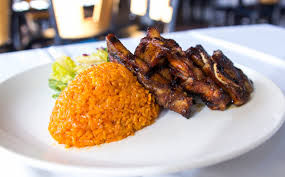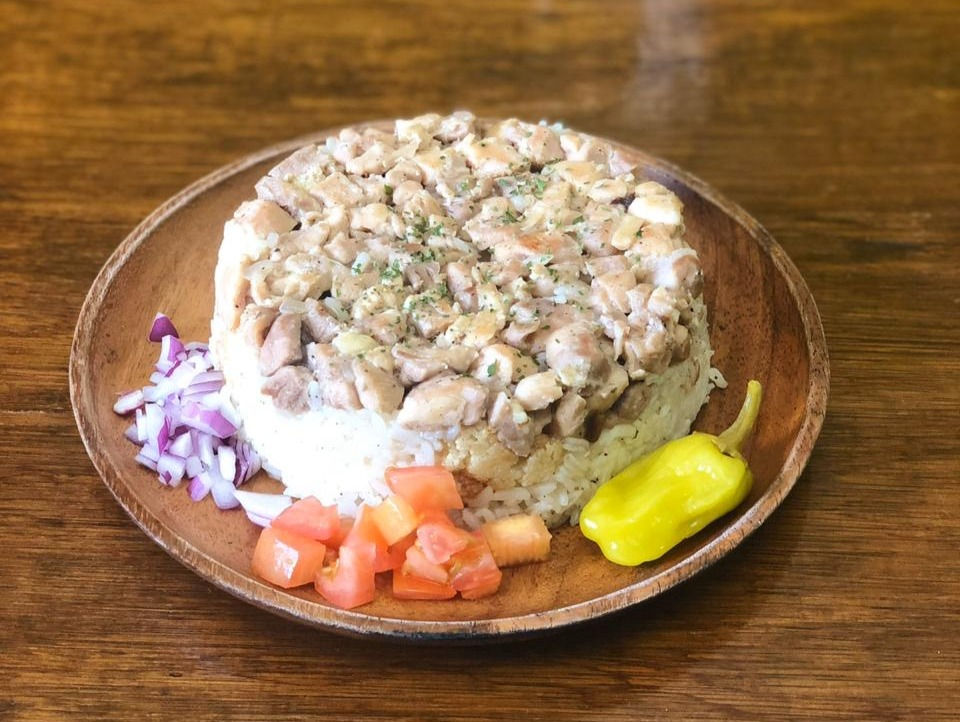For the Love of Rice
- Suaad San Nicolas
- Mar 1, 2020
- 4 min read
Updated: Jun 10, 2020
Rice was introduced to the Northern Marianas through trade just like it was introduced in Palestine. Nowadays, rice is a main staple in the Chamorro diet. In Palestine, rice is not a main staple but there are several dishes that include rice.
In this post, I will share two rice dishes from each of my cultural heritage. The first dish is Red Rice. This rice dish was introduced during the Spanish colonial times. It consists of rice cooked with lard and colored red by annatto seeds called achote in Chamorro. In today's more health conscious society, lard has been substituted or omitted from the recipe.
Red rice is a staple during gatherings, parties, fiestas and other celebrations. It is not cooked for everyday consumption since it takes longer to prepare. It is a favorite amongst Chamorro people and it is always expected to be on the table during most celebrations or barbecue sessions. Below is the recipe:

For a party of 10 or less:
5 cups of calrose rice
1 pack of annatto seeds (about 2 cups)
3 cups of chicken stock
2 cups of hot water
4-6 strips of bacon, sliced (optional)
1 cup of chopped onion
3- 4 cloves of garlic, chopped
1/4 tsp of salt
Black pepper (optional)
Wash the 5 cups of calrose rice until water is clear then drain and place in a bowl.
Place annatto seeds in a bowl and add 2 cups of hot water. Stir with a spoon and let it sit.
In a pot on medium heat, cook the bacon and render the fat.
Add the onions and garlic and saute until cooked.
Add the rice into the pot and fold in the onions and garlic.
Strain the liquid from the annatto seeds into the pot.
Add chicken broth, salt, and pepper and stir ingredients.
Cover the pot and let the water boil then lower the heat to low and simmer until all liquid is gone and rice is cooked.
When finished, place the rice in a serving dish and it is ready to be served and eaten. Red rice is delicious with almost anything. A favorite to eat it with is barbecue ribs and chicken.

The next rice dish is a Palestinian dish called Maqluba. It is a dish that consists of layers of meat, vegetables, and rice. The term maqluba translates as "upside down" because after you cook the dish, you flip it upside down on a plate and serve. My father made this for us often for lunch or dinner. It was one of his favorite dishes. He loved it with a freshly made salad and yogurt.

My father loves simplicity. He was not a fan of a lot of spices in food and said that it distracted the taste buds from the deliciousness of the vegetables, meat, and rice. Below is a modified recipe of the famous Palestinian dish called Maqluba.
3 ½ pound boneless chicken pieces, or beef, or lamb
2½ cups long-grain rice
1 small onion, chopped
3 garlic cloves, minced
1 medium-head cauliflower cut into florets
2-3 medium eggplants, cut into circles or half-moon discs
2 cups of broth, chicken or beef
Salt
Black pepper
Olive oil
⅓ cup pine nuts
First, wash the rice until water runs clear, drain, then place in a bowl.
Heat up a skillet with oil and begin frying the eggplants and cauliflower. Place them on paper towel lined dish and sprinkle a little salt on them.
Soak the rice in hot water for 10 minutes then drain.
In a pot on medium heat, heat up some olive oil then add the onions and garlic and saute. Add the chicken, salt, and black pepper. Stir all together and cook the chicken until browned.
Next, lower the heat, add the eggplants and cauliflower. Make sure to form a good base layer then add the rice and smooth it out forming a nice, tight layer.
Pour the broth on the rice and add more broth or water if needed. Cover the pot then bring liquid to a boil on high heat. Turn the heat down to medium low and allow to simmer. Leave the heat on low and allow liquid to simmer. Do not keep opening the lid of the pot as this will cause heat to escape and will result in unevenly cooked rice.
Once all liquid is gone, turn off the heat and let it cool slightly. Uncover the pot and take a large serving dish (one that is bigger than the mouth of the pot) and place on top of the pot. Holding the handles of the pot and using your thumbs to hold the dish in place, invert the pot and then place on a flat surface.
On a small frying pan, heat up olive oil and fry the pine nuts until golden brown, stirring frequently.
Slowly lift the pot while keeping an eye on the dish. You do not want the rice to fall out as this will ruin the final look of the maqluba. Once the pot is lifted, make sure that there are no pieces of meat or vegetables at the bottom.
Next, sprinkle pine nuts on top and garnish with mint (optional). Serve the maqluba while it is still warm. You may complement the dish with a freshly made salad and yogurt.
Both of these rice dishes take some time to prepare which makes them a labor of love. They are flavorful and give an extra deliciousness to plain, boring rice. Finding similarities in the dishes from both my cultures makes me realize the similarities in traditions and customs that are unique in both my Palestinian side and Chamorro side.







Comments